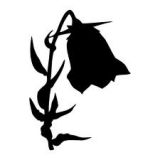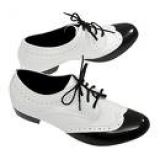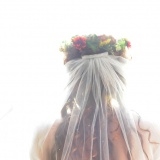- Forum
- General Discussion | Introductions | Off Topic Forum
- Photography General Discussion
- Wedding Photography...JPG/RAW
Wedding Photography...JPG/RAW
-
 Topic Author
Topic Author
- Tam
- Has the Hang of it
-
- Canon mark iv
- Followers: 4
- Posts: 52
-
Points:
0
Post #205713
-

- Barry
- New Kid On The Block
-
- Canon Mark II
- Followers: 5
- Posts: 48
-
Points:
0
-

- Darrell
- Apprentice
-
- Nikon D7000 & D70
- Followers: 27
- Posts: 2059
-
Points:
0
-

- LL Jazz
- Has the Hang of it
-
- Nikon D700
- Followers: 5
- Posts: 51
-
Points:
0
Post #205719
The question you should ask yourself is, I have $3000 worth of gear, why won't I spend $40 on an additional memory card if I'm always out of space?
-
 Topic Author
Topic Author
- Tam
- Has the Hang of it
-
- Canon mark iv
- Followers: 4
- Posts: 52
-
Points:
0
Post #205722
Barry wrote: Do it in raw so you have more room for recovery when you'll need it, and trust me, you'll need it in that white dress.
Do photographers have a hard time exposing for the dress? Anyone have any tips they care to share for getting the correct exposure?
-

- geoffellis
- Newbie
- Followers: 5
-
Points:
0
Post #205723
What JPEG essentially is, a lossy compression method. basically JPEG takes parts of the image it feels is unnecessary and throws it away. You usually have multiple JPEG settings that range from Low Quality to at least High Quality... sometimes even Fine or UItra Fine depending on the camera manufacturer. Basically the only difference between a Low, and Fine image, is the amount of image data that is thrown away by the camera when its created/compressed from the sensor.
That said... the Fine/Ultra Fine settings are usually pretty close in quality to raw, as very little image data has been thrown away. The key difference is that the camera, when creating the image has applied things like white balance, saturation, based on an algorithm and settings, and once that has been done, and compressed, you can never really truly go back and change it based on the original raw data.
Ill try to use it as another example... RAW is like a PSD file in photoshop. You can save the PSD and go back, work on different layers, pretty much go back and change whatever you want whenever you want. However once you export it to jpg, png, or whatever, the layers are flattened, etc, and you will never be able to go back and modify it like you could with the PSD file. If you say want to change text, in a PSD file you can just go back and change the text layer... however if its jpeg, you can really only paint over it, and make a new text layer on top so to speak.
So... RAW is great... but if you plan on doing very little editing then you probably wont see a big difference between the fine jpeg with camera defaults, and the fine jpeg with the raw file processing software defaults. lol
-
 Topic Author
Topic Author
- Tam
- Has the Hang of it
-
- Canon mark iv
- Followers: 4
- Posts: 52
-
Points:
0
Post #205726
LL Jazz wrote: The wedding should be no different than any other case you can think of. Why shoot JPEG at all unless you're working a paid job which is entirely dependant on quantity not quality?
The question you should ask yourself is, I have $3000 worth of gear, why won't I spend $40 on an additional memory card if I'm always out of space?
You are right. I should just buy myself a bigger card/another one in general. I guess maybe I'll shoot raw. If I start to fill up on all my cards, I can always switch back to jpeg just to save some space.
How many wedding photos does a photographer usually shoot in a full day wedding?
-

- LL Jazz
- Has the Hang of it
-
- Nikon D700
- Followers: 5
- Posts: 51
-
Points:
0
Post #205733
Tam wrote:
LL Jazz wrote: The wedding should be no different than any other case you can think of. Why shoot JPEG at all unless you're working a paid job which is entirely dependant on quantity not quality?
The question you should ask yourself is, I have $3000 worth of gear, why won't I spend $40 on an additional memory card if I'm always out of space?
You are right. I should just buy myself a bigger card/another one in general. I guess maybe I'll shoot raw. If I start to fill up on all my cards, I can always switch back to jpeg just to save some space.
How many wedding photos does a photographer usually shoot in a full day wedding?
How many shots depends on the photographer and how big the wedding is. I would way a min of 400 photos.
-

- Henry Peach
- Apprentice
-
- I currently use a 5DII or Sony Nex-3 most of the time.
- Followers: 50
- Posts: 2925
-
Points:
16
Post #205741
All you need to know to handle the groom in black and the bride in white is an understanding of the fundamentals of exposure and the dynamic range limitations of your gear. It's no different than shooting any other white or black object. Dress exposure problems are usually caused by the photographer not understanding how the meter works, and it's limitations when running in any sort of auto mode. If you want to practice shoot white and black towels in similar light as you are going to encounter at the wedding. You are trying to retain a significant amount of detail.
You mention a hired photographer, and it sounds like you intend to fully cover the wedding. Is the family member who asked you the same one who hired the pro? Is the pro aware that other photographers are being asked to cover the wedding? Are you involved with the planning? These are important things to get straight before the day of the wedding.
-
 Topic Author
Topic Author
- Tam
- Has the Hang of it
-
- Canon mark iv
- Followers: 4
- Posts: 52
-
Points:
0
Post #205742
geoffellis wrote: There are some significant benefits to working with raw... basically you have a lot more control over a raw image simply because it has 100% of the image and data involved in taking the picture.
What JPEG essentially is, a lossy compression method. basically JPEG takes parts of the image it feels is unnecessary and throws it away. You usually have multiple JPEG settings that range from Low Quality to at least High Quality... sometimes even Fine or UItra Fine depending on the camera manufacturer. Basically the only difference between a Low, and Fine image, is the amount of image data that is thrown away by the camera when its created/compressed from the sensor.
That said... the Fine/Ultra Fine settings are usually pretty close in quality to raw, as very little image data has been thrown away. The key difference is that the camera, when creating the image has applied things like white balance, saturation, based on an algorithm and settings, and once that has been done, and compressed, you can never really truly go back and change it based on the original raw data.
Ill try to use it as another example... RAW is like a PSD file in photoshop. You can save the PSD and go back, work on different layers, pretty much go back and change whatever you want whenever you want. However once you export it to jpg, png, or whatever, the layers are flattened, etc, and you will never be able to go back and modify it like you could with the PSD file. If you say want to change text, in a PSD file you can just go back and change the text layer... however if its jpeg, you can really only paint over it, and make a new text layer on top so to speak.
So... RAW is great... but if you plan on doing very little editing then you probably wont see a big difference between the fine jpeg with camera defaults, and the fine jpeg with the raw file processing software defaults. lol
Thank you for going so indepth with your answer. Honestly I have no idea how much editing I will be doing. I normally shoot portraits, so I have the knowledge of portraits, I just never photograph a wedding before. I shoot all my portraits in jpeg and never have a problem with editing.
-
 Topic Author
Topic Author
- Tam
- Has the Hang of it
-
- Canon mark iv
- Followers: 4
- Posts: 52
-
Points:
0
Post #205749
Henry Peach wrote: The original post says you get good results with jpeg, but makes no mention of your experience with raw processing. If you are experienced with raw processing then you know the advantages of raw, and whether you need/want to take advantage of those. Many pros successfully shoot only jpeg. I don't think a wedding is an appropriate situation to suddenly switch techniques, gear, workflow, etc.... Stick with what you know works for you. So if you are not used to shooting and processing raw at least shoot raw+jpeg. Or get in plenty of practice with raw before the wedding.
All you need to know to handle the groom in black and the bride in white is an understanding of the fundamentals of exposure and the dynamic range limitations of your gear. It's no different than shooting any other white or black object. Dress exposure problems are usually caused by the photographer not understanding how the meter works, and it's limitations when running in any sort of auto mode. If you want to practice shoot white and black towels in similar light as you are going to encounter at the wedding. You are trying to retain a significant amount of detail.
You mention a hired photographer, and it sounds like you intend to fully cover the wedding. Is the family member who asked you the same one who hired the pro? Is the pro aware that other photographers are being asked to cover the wedding? Are you involved with the planning? These are important things to get straight before the day of the wedding.
Thank you Henry. I do not shoot in raw. I only shoot in jpeg. The only reason I even thought about raw is because it's a wedding, however I usually get good results shooting my portraits in jpeg. The bride/groom hired the photographer. The mother of the bride ask me to take pictures of the wedding. I have no idea who the hired photographer is and what he/she may or may not know. I guess I should get some answers. Thanks.
-

- geoffellis
- Newbie
- Followers: 5
-
Points:
0
Post #205751
I do however assume that one day ill get around to learning more about raw processing, so I just toss the RAW files in a separate directory... and maybe one day ill go back and find an okay shot and turn it into something stunning LOL
And memory cards now a days.... SOOOO cheap. even brand names. like 16GB high speed sd cards cards go for ~50$ now in Canada. 32GB are less than 90$. I remember when i paid like 170$ for a 4GB SDHC card or something haha
-

- Stealthy Ninja
- Moderator
-
- Fuji X stuff and a 1DsIII for some reason
- Followers: 982
- Posts: 16300
-
Points:
6837
Post #206039
Too many things can go wrong (white balance etc.) and you can't shoot it again.
Just buy a few more cards and be more selective with your shots.
-

- mklinejr
- Snapobsessed
-
- Nikon D700
- Followers: 30
- Posts: 277
-
Points:
125
Post #206057
Thats just the way I do it...and I shot around 800 photos of an all day wedding but edit it down to about 300that i show the client.
Life is much more managable when thought of as a scavenger hunt as opposed to a surprise party - Jimmy Buffet
-

- Stealthy Ninja
- Moderator
-
- Fuji X stuff and a 1DsIII for some reason
- Followers: 982
- Posts: 16300
-
Points:
6837
Post #206061
mklinejr wrote: I have done several weddings and I shoot JPEG Fine. I am not familiar with the way I can edit raw to use all the space. I do have mistakes that would be nice to fix in PS (mostly a blown out detail) since I didnt change a setting right away when going in or out of a church. But I look frequently at the screen just as a guideline. I try to use the JPEG like I did film and shoot correctly and I ususally dont have much problems that I cant fix in PS..
Thats just the way I do it...and I shot around 800 photos of an all day wedding but edit it down to about 300that i show the client.
I have 6 words for you man.
"Buy Lightroom.
Learn to use it."
It'll really help you with your workflow, especially for events. You can skip through and make picks (P) and then just work on those picks. Editing and organizing RAW in LR is really simple too.
Do this and you'll never shoot jpeg again.
- Forum
- General Discussion | Introductions | Off Topic Forum
- Photography General Discussion
- Wedding Photography...JPG/RAW
Latest Reviews
The Canon EOS R100 is an entry-level mirrorless camera introduced in 2023. But just because it’s an entry-level camera doesn’t mean it’s a bare-bones camera. Find out why in this review!
Nikon’s retro-looking Nikon Zfc is anything but retro. Under its classic body is a host of features and amenities that make it a worthwhile compact mirrorless camera for 2024.
The Canon EOS R50 is one of the newest R-system cameras from Canon. Is it worth your money? Find out all the details you need to know in this comprehensive review.
The Sony FE 70-200mm f/2.8 GM OSS II is Sony’s flagship mirrorless zoom lens. As such, it’s loaded with features and has a top-shelf build quality that makes it a top pick!
Forum Top Posters
-
1TCav 6 posts
-
2Prago 4 posts
-
3Foggy 4 posts
-
4Sandy Smith Photos 3 posts
-
5Razky 3 posts
-
6No Show 3 posts
-
7CaptNemo 3 posts
-
8db3348 3 posts
-
9Scotty 3 posts
-
10Rob Conley 2 posts
Latest Articles
Creating impactful photos of landscapes depends on many factors, not the least of which is your talent behind the lens. This guide explores other elements required for the best product.
The Canon EOS R100 is an entry-level mirrorless camera introduced in 2023. But just because it’s an entry-level camera doesn’t mean it’s a bare-bones camera. Find out why in this review!
Are you ready to upgrade your camera? Before buying new, you might consider the value of purchasing used gear to save money.
The Olympus OM-D E-M10 Mark IV is a micro four thirds camera released in 2020. It’s an entry-level system along with the OM-D E-M5 Mark III. Use this guide to determine which one is best for you!
Blue hour photography might not be as well known as golden hour photography, but it is every bit as good a time to create epic images of landscapes. Learn how in this quick tutorial!
Nikon’s retro-looking Nikon Zfc is anything but retro. Under its classic body is a host of features and amenities that make it a worthwhile compact mirrorless camera for 2024.
Moving from taking snapshots of your dog to creating beautiful images doesn’t have to be that difficult! Use the tips outlined in this dog photography guide, and you’ll get better results in no time.
Acrylic print photos are a beautiful way to display your favorite images. But they don’t come without some questions. Get all the answers you need about this medium in this guide!

















